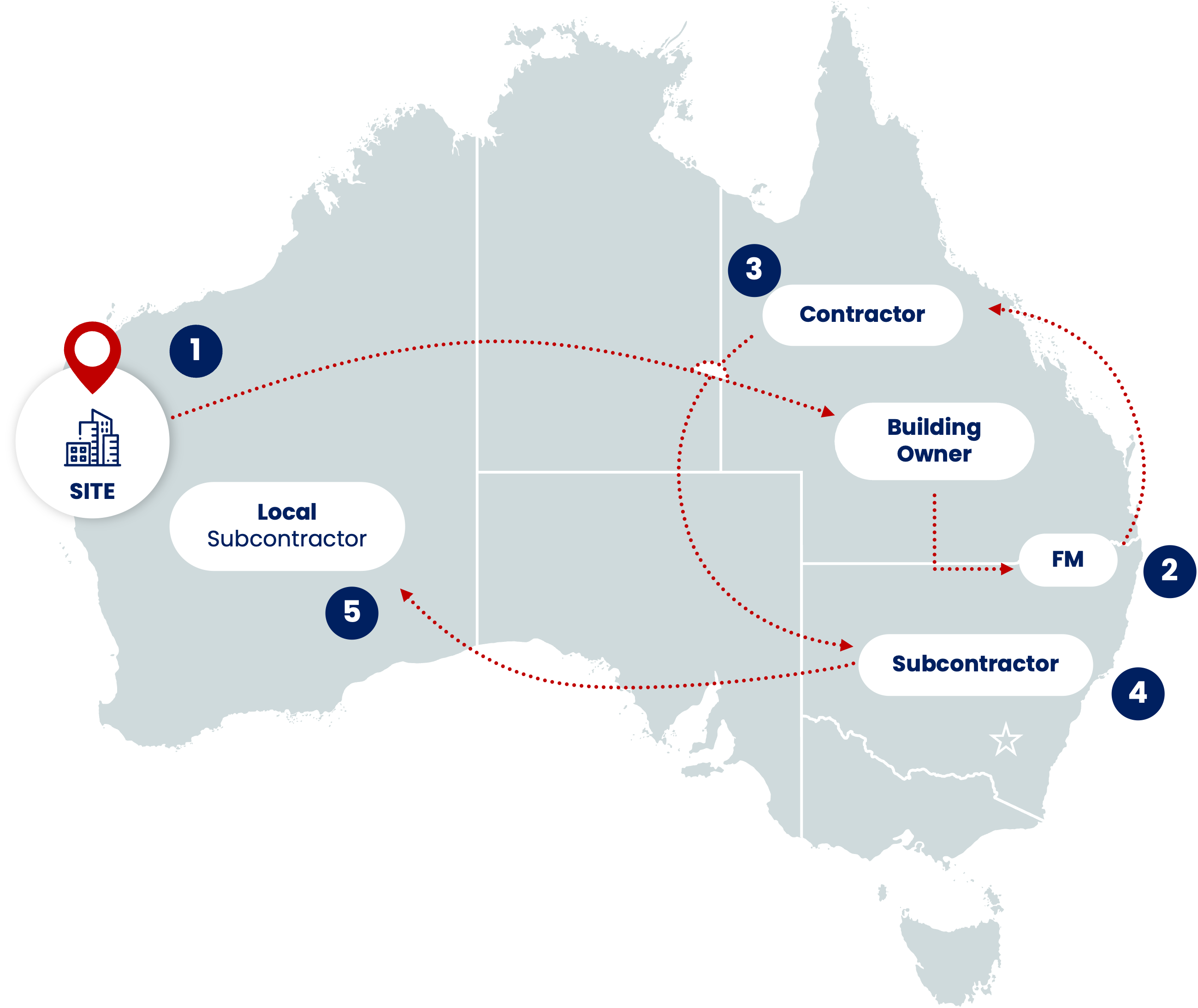The Hidden Risks of Subcontracting
Will you be held accountable for your subcontractor’s safety lapses? Subcontracting often brings critical risks that can compromise safety, compliance, and operational integrity. With increasing legislative requirements, there is an imminent need for businesses to have full oversight and control of subcontracted arrangements.
TL:DR – Key Takeaways
- Being Aware of The Hidden Risks: Subcontracting can obscure compliance transparency making it difficult to ensure site safety standards.
- ‘Subbies on Subbies’: Multi-level subcontracting increases the risk of non-compliance and weakens oversight. This results in contractors becoming more removed from the original site-specific obligations, requirements and practices.
- Accurate Data is Essential: Using real-time tracking and data, businesses can improve transparency, ensuring contractors and subcontractors meet all compliance and safety requirements.
Facility Managers (FMs) handle complex sites across multiple locations, relying on contractors and their subcontractors with expertise in trades like HVAC, fire protection, and general maintenance to keep operations safe and efficient. While contract outline each party’s responsibilities, including subcontractor access, these agreements often fall short in practice.
Workers arriving on site are often not directly employed by the contracted company and can therefore lack the essential pre-requisite knowledge and training for site standards and safety requirements. This disconnect introduces significant risk – subcontractors are uninformed about site-specific safety expectations and requirements.
The Nature of Subcontracting – Essential but Risky
Given Australia’s vast landscape and the geographic dispersion of facilities, subcontracting is often a necessity, providing access to specialised trades, licences, and skills. However, this reliance also increases risks, including:
- Reliance on Multi-Disciplinary Contractors: Engaging a single provider for multiple services creates a dependancy on the efficient outsourcing of specialised work. This diminishes compliance oversight when multiple subcontractors are involved.
- Skill Shortages: Lack of skilled labour forces contractors to spread their workforce across multiple projects, often leading to slower, lower-quality work from subcontracted parties.
- Disjointed Work Order (WO) Sytems: Each contracting company often uses its own isolated WO system, limiting seamless communication and leaving subcontractors without clear job requirements, safety protocols, or governance standards.
Although contracts may prohibit subcontracting, it is widely used – and often occurs covertly – to maintain site operations. Risks are amplified further as subcontractors hire more subcontractors, sometimes five or six levels from the original client contract, often referred to as ‘subbies on subbies’.
Case Example: Unravelling the Complexities of a Common Subcontracted Workflow
The example below illustrates a common subcontracting setup across facilities resulting in increased risks for sites and their management teams:
- A person on site at Karratha, WA, logs a repair request to their helpdesk.
- This flows through to the FM, who in turn provide a WO to the contracted provider.
- Due to labour constraints, locations, or specialised skill requirements, the Head Contractor activates their own subcontracting arrangements.
- This contractor then issues a WO from their own system to a subcontractor.
- The subcontractor cannot personally complete the work, so they provide their WO to a local subcontractor.
- There is now a 3-tiered WO and the subcontractor attending the site is unaware of job requirements, safety procedures, or contractual obligations.
Further complicating matters, the technician in Karratha is handling work orders from multiple contractors across various sites and is often unaware of each site’s specific safety and contractual obligations.

The Result? Significantly Decreased Visibility for All Parties
- Only the head contractor knew the agree requirements and standards set out in the original contract and WO.
- The second subcontractor was unaware of their compliance obligations and lacked sufficient information on the safety obligations.
- The head contractor closed the job without any visibility on the quality or completion level of the repair work.
- FMs trusted the primary contractor and approved payment without full visibility.
Technology for Enhanced Subcontractor Visibility & Accountability
To address these challenges head-on and ensure a higher standard of accountability and safety, accurate technology-driven solutions are essential. Data driven, in-field solutions provide visibility on these third-party arrangements and ensures the person turning up on your site understands and follows site requirements and associated rules. If they don’t, won’t, or can’t, they will not have access and approval to be on your site.
Real-time contractor and subcontractor data that must be captured to ensure complete compliance includes:
- Who is on-site?
- Who do they work for?
- How long are they on-site for?
- Do all subcontractors meet compliance requirements?
- What is the status of their repair or maintenance work?
By implementing Verified, you can ensure compliance and risk reduction.
Learn More Today
By ensuring all contractors and subcontractors complete the induction processes, you can easily reduce the operational and reputational risk from third parties. For further information on how you can have complete visibility of subcontractors, book a demo here with the Verified team.



